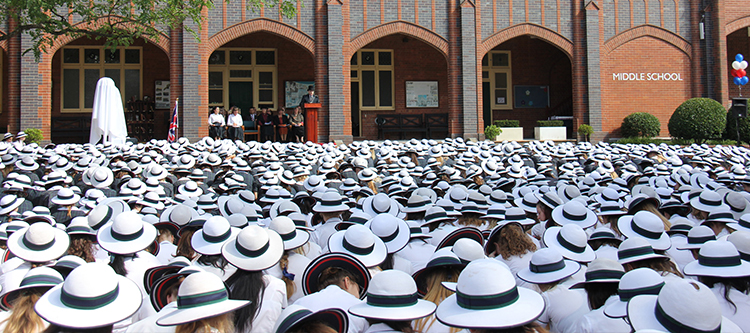Every student matters
Thursday 23 June, 2016
“I believe Government support for a child’s education is one of the entitlements of citizenship. No matter how rich or poor your parents are or where you go to school, our nation should provide a basic degree of support to your education: because you are Australian, because you are part of the whole.”
– Then Prime Minister, the Honorable Julia Gillard addressing the ISCA-AHISA National Education Forum in 2012.
In the lead up to the Federal Election on Saturday 2 July, there is likely to be much discussion about government funding for independent schools, which will no doubt take us to the public versus private school debate.
Like our former Prime Minister Gillard, I believe that all Australian schools deserve funding, and this includes independent schools such as Pymble Ladies’ College.
I don’t believe the media hype that typically surfaces during a pre-election campaign period claiming that the government – whichever one is in power at the time – is disadvantaging public schools by continuing to fund the independents.
It is true that State and Federal governments both fund independent schools. Schools receive an amount of money per student, calculated by two criteria: the rate per student and the number of students at the school.
In the case of Pymble Ladies’ College, the rate per student is around $4000 from the State and Federal governments combined, which is below average according to The 2015 Productivity Commission Report on Government Services. Meanwhile, another independent school might receive $8000 per student, based on a complicated formula that includes social economic status.
The Report made it clear that State and Federal government funding to non-government schools in 2012–2013 amounted to just $11 billion. State schools, however, received around $37 billion.
Calculated per student, independent schools received $8812 on average per student in government funding, but State school students attracted $15,703 each. To top up the difference, parents across all non-government schools (independent and Catholic) contribute more than $6 billion per year in the form of tuition fees and donations.
These facts from the 2015 Report show that the growth of independent schools – by 14.1 per cent since 1970 – is saving our governments $2.5 billion every year.
Yet there’s even more to the story. Usually, independent schools receive the majority of their income – around 60 per cent – from fees, donations and fundraising within the school community. At Pymble, more than 80 per cent of funding is generated internally, hence our lower than average government subsidy. Grants and targeted programs, such as funds to help students with special needs or those who are from non-English speaking backgrounds, make up the rest.
It’s sound financial stewardship – not government funding – that keeps independent schools alive.
Examining the figures without the spin shows that independent schools are an essential part of the Australian education mix. This is not just in terms of the quality of the education or – in the case of Pymble – the outstanding learning opportunities and environment we provide. It’s the economic benefit we’re providing to the nation, too.
So, let’s end the public versus private school debate once and for all and remember the real issue here – that every Australian student matters.
Mrs Vicki Waters
Principal



